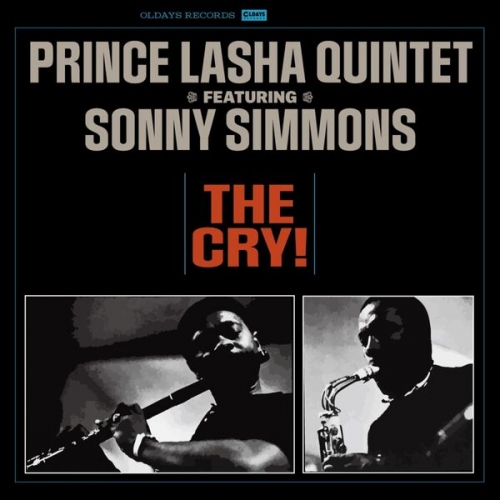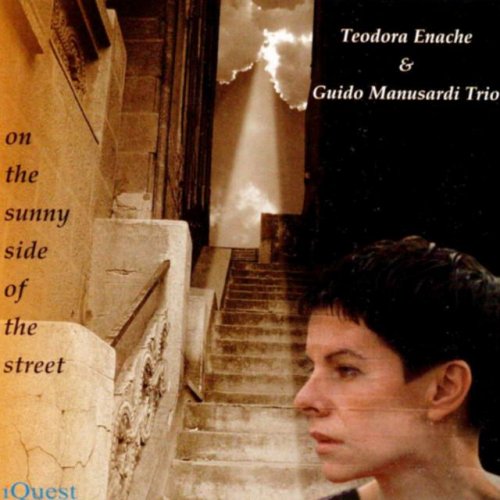VA - Polyhymnia Ten Year Anniversary Disk (2009) [SACD]

Artist: VA
Title: Polyhymnia Ten Year Anniversary Disk
Year Of Release: 2009
Label: Polyhymnia
Genre: Classical
Quality: DSD64 image (*.iso) / 2.0, 5.0 (2,8 MHz/1 Bit)
Total Time: 01:13:04
Total Size: 4.37 GB
WebSite: Album Preview
Title: Polyhymnia Ten Year Anniversary Disk
Year Of Release: 2009
Label: Polyhymnia
Genre: Classical
Quality: DSD64 image (*.iso) / 2.0, 5.0 (2,8 MHz/1 Bit)
Total Time: 01:13:04
Total Size: 4.37 GB
WebSite: Album Preview
This SACD was released in honor of the 10th anniversary of the record company Polyhymnia for its customers and friends and was not intended for sale.
Tracklist:
01. The Monteverdi Choir the English Baroque Soloists, John Eli (conductor) - Cantata BWV 20 O Ewigkeit, du Donnerwort
02. Pratum Integrum Orchestra - Symphony in g minor, op. 6 Nr. 6 allegro molto
03. Julia Fischer, Russian National Orchestra, Yakov Kreizberg (conductor) - Violin Concerto in d minor Allegro Vivace
04. Mitsuko Uchida (piano) - Piano Sonata No. 29, opus 106 Hammerklavier Scherzo
05. The Philadelphia Orchestra, Christoph Eschenbach (conductor) - Symphony Nr. 5, Movement 4 Allegro no troppo
06. Lorraine Hunt Lieberson (soprano), Orchestra of the Age of Enlightenm - Serse, Ombra mai fu
07. Die Deutschekammerphilharmonie Bremen, Paavo Jarvi (conductor) - Symphony Nr. 3 Scherzo
08. Alexei Utkin (oboe), Hermitage Chamber Orchestra - Orchestra Suite #2 in a minor Badinerie
09. Wilfried Van den Brande, Nurnberger Symphoniker, Dirk M. B - Sixteen Tons
10. Russian National Orchestra, Vladimir Jurowski (conductor) - Symphony #1 -1st movement Allegretto - Allegro non troppo
11. Alexei Utkin (Oboe), Hermitage Chamber Orchestra - Pan, who played upon the reed pipe which was Syrinx, his be
12. Royal Concertgebouw Orchestra, Mariss Jansons (conductor) - L'Oiseau de feu -Danse infernale du roi Kastchei
13. Netherlands Chamber Choir, Limburg Symphony Orchestra, Ed S - Requiem Op. 48 In Paradisum
14. Mitsuko Uchida, Piano & Mark Steinberg, Violin - Sonata for Piano & Violin in Fa major, K377 Allegro
15. Olga Martynova, harpsichord - Three pieces from Children's Hour - In Folk Style
16. Carel Kraayenhof (bandoneon), Concertgebouw Chamber Orchest - Adios Nonino
17. Storioni Trio - Piano Trio #1 in B, opus 8 Scherzo
18. Soloists, Chorus & Orchestra of the Bolshoi Theatre Moscow - Ruslan and Ludmila - Act 1 Chto sluchilos
19. Royal Concertgebouw Orchestra, Mariss Jansons (conductor) - Symphony# 5 - Movement 1 Trauermarsch
20. Elly Ameling (soprano), Dalton Baldwin (piano) - An die Nachtigall, opus 98 1, D. 497
21. Alfred Brendel (piano), Scottish Chamber Orchestra, Sir Cha - Piano Concerto No. 9, K.271 - Andantino
22. London Symphony Orchestra, Leon Botstein (conductor) - Symphony Nr. 1 - Allegro energico
23. Budapest Festival Orchestra, Ivan Fischer (conductor) - Long Live the Hungarians polka, opus 332
24. Dawn on the banks of Loch Lomand
25. A Steam Train Journey
26. The Edinburgh Military Tattoo
Polyhymnia Tenth Anniversary
Polyhymnia celebrated its 10-year anniversary at the end of 2008, and to celebrate we created a SACD sampler and small booklet for our clients and friends, with highlights of our first 10 years as an independent recording company. Here is an abridged version of that chronicle.
The Philips Legacy and the Birth of Polyhymnia
The Polyhymnia story begins with the story of Philips Classics. The Philips Classics recording centre was founded in the Netherlands in 1950 to provide top quality worldwide recording services for the Philips Classics label, working with many of the world’s top classical artists. In 1971, the recording centre moved to a beautiful carriage house in Baarn, which was soon christened ‘Polyhymnia’, after the muse of sublime and sacred hymn.
By 1996 the CD market was in decline and PolyGram, the parent company of Philips Classics, decided that they no longer needed three recording centres (Decca in London, Deutsche Grammophon in Hanover, and Philips in Baarn), and discussed closing the Baarn centre. A small group of Philips Classics engineers immediately proposed starting an independent recording company. After more than a year of negotiations, PolyGram agreed to a deal, and the Philips Classics recording centre became home to a new independent company. Taking the villa’s name as its own, Polyhymnia International was established on October 15, 1998.
Surround Sound
As Polyhymnia was starting out, DSD and surround sound developments were accelerating. Polyhymnia was intimately familiar with the birth of surround sound – after all, surround recording played a big role in the history of Philips Classics. Philips’ engineer Hans Lauterslager developed a six-channel experimental system during the time of Philips’ LP quadro recordings. In the digital age, Onno Scholtze and Erdo Groot made experimental quadro recordings for Philips Electronics’ MPEG development for DVD. In 1996 Philips Classics was asked by Philips Eindhoven to participate in the development of a new (now audio-only) standard. Together with Sony, Philips was developing a new format that was supposed to replace CD. This was the start of the SACD format, and of a very close and fruitful collaboration between Polyhymnia and the Philips SACD development team, a period described in more detail on the Super Audio Center website by Andrew Demery, one of the driving forces on that team (www.superaudiocenter.com/DemRep.htm).
Within a year the Philips Eindhoven team had built a prototype eight-channel DSD recorder, which they brought to several Philips recordings. After the first test recording with Sir John Eliot Gardiner conducting Schumann Symphonies, and a successful experimental recording of Dvorák Slavonic Dances in 1999, Philips decided to record a live concert with Iván Fischer and the Budapest Festival Orchestra, which would become the first ever hybrid surround SACD release. This disc was introduced at the Berlin IFA show later that year, with great success. The capacity to record complete sessions in DSD was now available, and Philips and Sony supported record companies wanting to release recordings in the SACD format. Polyhymnia was at the forefront of the development of DSD and surround, and can take credit for having a hand in several hundred SACD recordings.
Polyhymnia celebrated its 10-year anniversary at the end of 2008, and to celebrate we created a SACD sampler and small booklet for our clients and friends, with highlights of our first 10 years as an independent recording company. Here is an abridged version of that chronicle.
The Philips Legacy and the Birth of Polyhymnia
The Polyhymnia story begins with the story of Philips Classics. The Philips Classics recording centre was founded in the Netherlands in 1950 to provide top quality worldwide recording services for the Philips Classics label, working with many of the world’s top classical artists. In 1971, the recording centre moved to a beautiful carriage house in Baarn, which was soon christened ‘Polyhymnia’, after the muse of sublime and sacred hymn.
By 1996 the CD market was in decline and PolyGram, the parent company of Philips Classics, decided that they no longer needed three recording centres (Decca in London, Deutsche Grammophon in Hanover, and Philips in Baarn), and discussed closing the Baarn centre. A small group of Philips Classics engineers immediately proposed starting an independent recording company. After more than a year of negotiations, PolyGram agreed to a deal, and the Philips Classics recording centre became home to a new independent company. Taking the villa’s name as its own, Polyhymnia International was established on October 15, 1998.
Surround Sound
As Polyhymnia was starting out, DSD and surround sound developments were accelerating. Polyhymnia was intimately familiar with the birth of surround sound – after all, surround recording played a big role in the history of Philips Classics. Philips’ engineer Hans Lauterslager developed a six-channel experimental system during the time of Philips’ LP quadro recordings. In the digital age, Onno Scholtze and Erdo Groot made experimental quadro recordings for Philips Electronics’ MPEG development for DVD. In 1996 Philips Classics was asked by Philips Eindhoven to participate in the development of a new (now audio-only) standard. Together with Sony, Philips was developing a new format that was supposed to replace CD. This was the start of the SACD format, and of a very close and fruitful collaboration between Polyhymnia and the Philips SACD development team, a period described in more detail on the Super Audio Center website by Andrew Demery, one of the driving forces on that team (www.superaudiocenter.com/DemRep.htm).
Within a year the Philips Eindhoven team had built a prototype eight-channel DSD recorder, which they brought to several Philips recordings. After the first test recording with Sir John Eliot Gardiner conducting Schumann Symphonies, and a successful experimental recording of Dvorák Slavonic Dances in 1999, Philips decided to record a live concert with Iván Fischer and the Budapest Festival Orchestra, which would become the first ever hybrid surround SACD release. This disc was introduced at the Berlin IFA show later that year, with great success. The capacity to record complete sessions in DSD was now available, and Philips and Sony supported record companies wanting to release recordings in the SACD format. Polyhymnia was at the forefront of the development of DSD and surround, and can take credit for having a hand in several hundred SACD recordings.
![VA - Polyhymnia Ten Year Anniversary Disk (2009) [SACD]](https://www.dibpic.com/uploads/posts/2022-01/1642746538_img_0003.jpg)






![Limotges - The Burt Bacharach Songbook (2025) [Hi-Res] Limotges - The Burt Bacharach Songbook (2025) [Hi-Res]](https://www.dibpic.com/uploads/posts/2025-12/1766823472_l6enc3v4rcqoc_600.jpg)
![Nigel Price & Alban Claret with Mikele Montolli & Matt Fishwick - Entente Cordiale (2023) [Hi-Res] Nigel Price & Alban Claret with Mikele Montolli & Matt Fishwick - Entente Cordiale (2023) [Hi-Res]](https://www.dibpic.com/uploads/posts/2025-12/1766795538_hf8ta0jsdmh8b_600.jpg)



![The Second Hand Orchestra - SNOW, This Is Christmas (2025) [Hi-Res] The Second Hand Orchestra - SNOW, This Is Christmas (2025) [Hi-Res]](https://img.israbox.com/img/2025-12/29/rduearbt1v1wv82iyir3kdf41.jpg)
![Ben Marc - Who Cares Wins (2025) [Hi-Res] Ben Marc - Who Cares Wins (2025) [Hi-Res]](https://img.israbox.com/img/2025-12/29/nqg428wawx3giymyblda2ld32.jpg)
